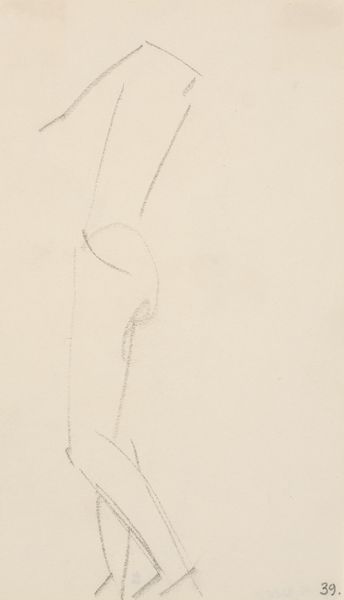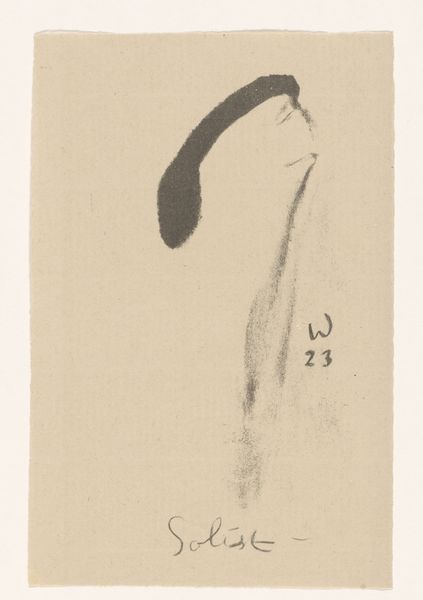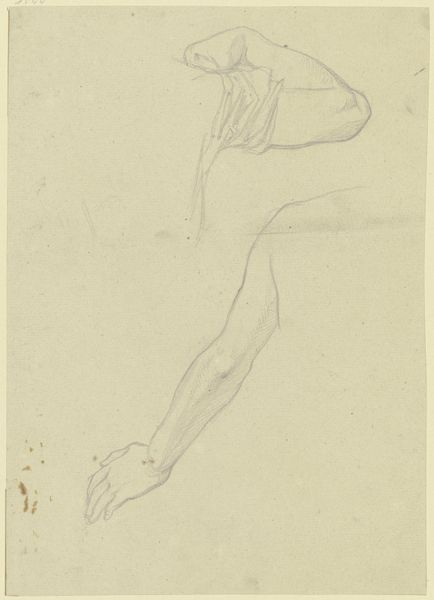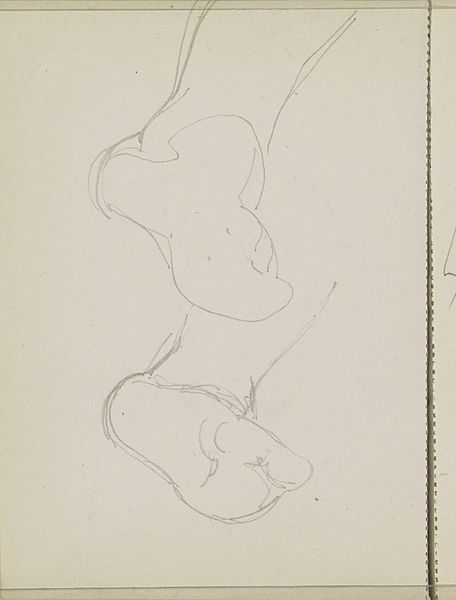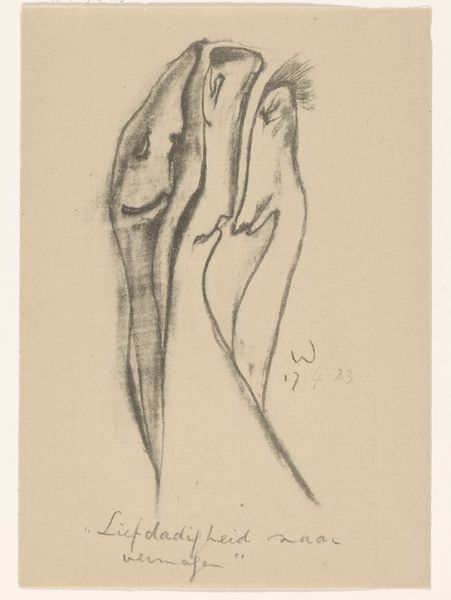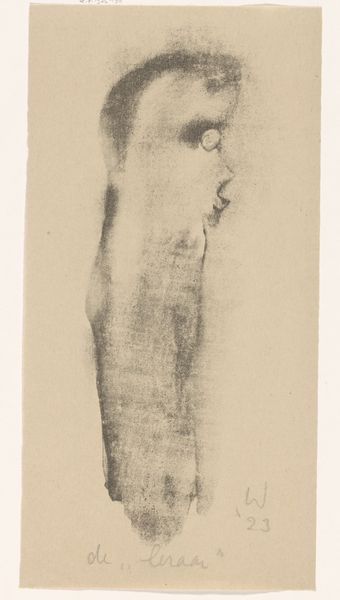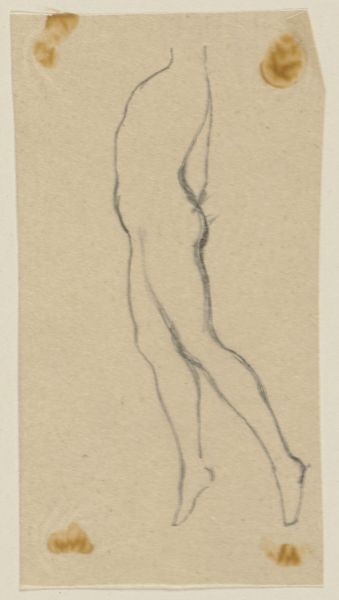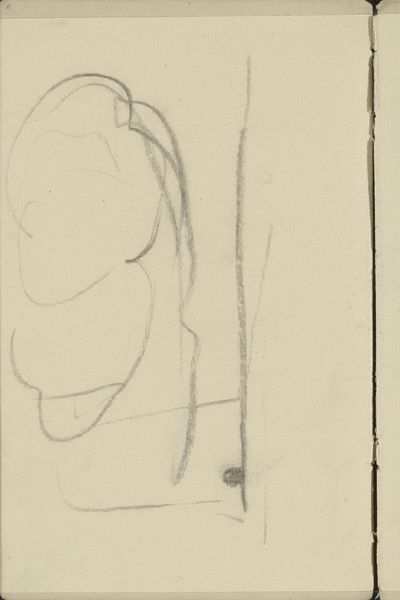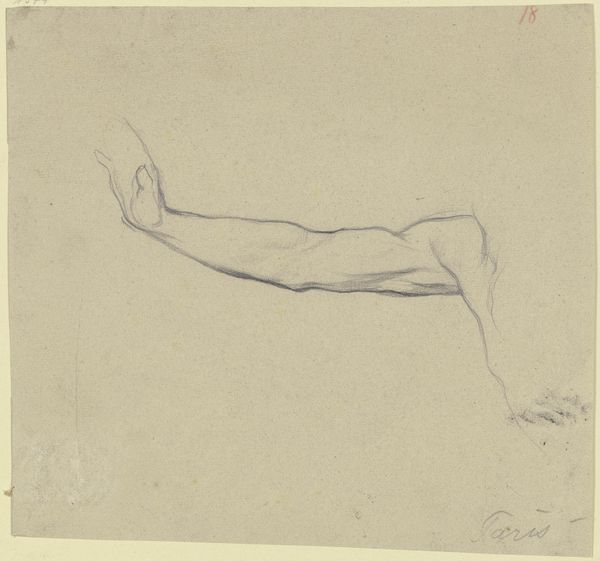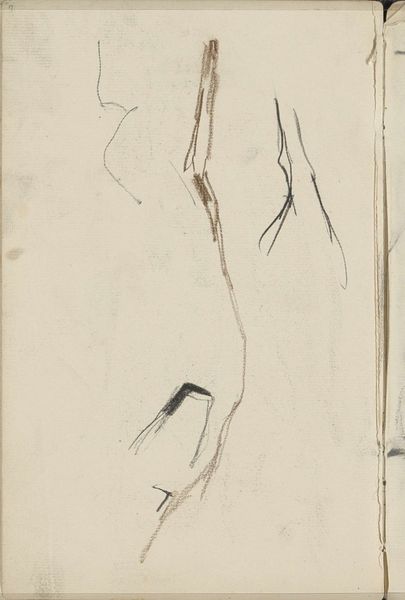
drawing, pencil, graphite
#
portrait
#
drawing
#
pencil sketch
#
figuration
#
form
#
pencil
#
expressionism
#
graphite
Dimensions: height 207 mm, width 108 mm
Copyright: Rijks Museum: Open Domain
Erich Wichmann made this small drawing called "Bohème Cassée" in 1923. It’s an evocative image made with graphite on paper, depicting a single, stylized arm. The title refers to the "broken bohemian," a figure marginalized even within the avant-garde circles of the early 20th century. We could consider it within the context of Weimar Germany, a period of intense social and political upheaval. It's a moment when traditional notions of beauty and the body were being challenged. Wichmann, a German expressionist artist, uses stark lines to convey a sense of fragility. The arm could be interpreted as a symbol of the artist’s own struggle or a broader statement about the precarity of life in a rapidly changing society. As art historians, we can dig deeper by researching the cultural and political climate of Weimar Germany, exploring the artist’s biography, and examining the ways in which other artists of the time were grappling with similar themes. The meaning of this work is contingent on the social and institutional context in which it was made and received.
Comments
No comments
Be the first to comment and join the conversation on the ultimate creative platform.
